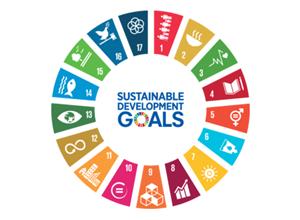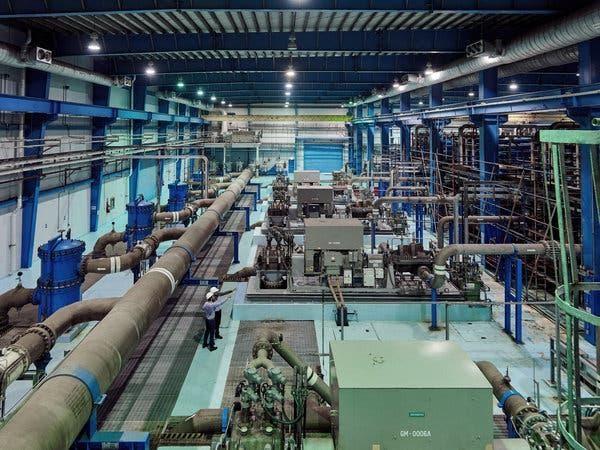
6 minute read
The Cure in The Root of The Predicament - Adam Mohammad Hilmi
from Serpentes Issue 6
Introduction
The 21st Century saw the world plunge into the beginning of a frightful chapter; global warming and our heightened consciousness of the deteriorating environment as well as the political and economic difficulties that affect human rights. Delving deeper into the conundrum, it is easy to see that the roots of these issues trace all the way back to the ‘Tyger’ of the 18th Century. The industrial revolution took the world by storm as coal became the primary energy source used to power the heavy machinery that drove industrial growth. Alongside that growth came unforeseen costs that humanity continues to pay till this day.
The Root
In the 18th Century, levels of manufacturing were reached that were never before thought possible and with the progress came the potential to carve a fortune; a motivation that far overshadowed the calamitous effects of exponential development in industry. The utilization of the steam engine, through the combustion of coal and petrol was the flint that sparked the unsustainable amount of greenhouse gasses that, even until now, is being released into the atmosphere. Massive booms in industry accompanied by the limited regulations of the 18th Century translated to the ingraining of irresponsible behavior, the negligence of social costs in production, within firms for generations to come. It was common practice for waste to be dumped into rivers and for ashes to be scattered across the streets. Humanity progressed forward in commerce and technology, but the global ecosystem paid the price. It is also theorised, that although child labour had historically existed for thousands of years usually in the case of children helping their parents on farms, it was the large up-scale of production during the Industrial Revolution that propagated the use of children in industry in ways which were far more dangerous than their agrarian work. Some historians even suggest that the 19th century was when child labour ‘peaked’ in the United States. This could simply be due to an increase in population but could also be the result of greater demand for work in the exponentially growing industry, which would be positive, if it was not imposed on children who would then be exploited as ‘cheap labour’ by manufacturing firms. Children took on roles in the mining industry which were highly dangerous including ‘hurriers’, who were tasked with pushing carts weighing up to 400kg in the precarious settings of the mines. They risked being trapped in mines and consequently dying of hunger. Additionally, children were potentially exposed to toxic gasses and also risked drowning in groundwater or being buried alive. The conditions in factories weren’t much better with children being exposed to boiling hot machinery and hazardous equipment. Children were forced to work unbearably long hours resulting in potential injuries and accidents which were routinely neglected by firms without
any compensation. It’s obvious that the immoral practices of the past have resulted in current day issues regarding child abuse in labor. This is because practices in Britain at the time were also abominably used in the colonies ranging from Malaysia to Jamaica. In addition, the still persisting use of children for labor prevents their engagement in education which directly correlates to income inequality as children are unable to escape the cycle of poverty.
The aforementioned statements are made to suggest that many of the current day problems that humanity faces, as reflected in the United Nations Sustainable Development Goals (hereby: SDG), can be traced back to their origins which is argued to be the Industrial Revolution of the 18th Century. The Industrial Revolution was only made possible by the advancement of technology and thus one may even go so far as to claim that technological advancement is the root of our global issues to date.
The Cure


Ironically however, the latter half of this article aims to present the argument that technological advancement, though argued to be the root of the problems, is the best process to cure the issues of the SDGs. Technological advancement can mean a plethora of things. However, in the context of this article, it may loosely be defined as improving machinery today, through innovation and scientific methods to become more efficient in their own rights and to be able to perform more tasks. It can be argued that technological advancement may be able to positively impact up to 70% of the SDG aims.
Take the issue of global warming, arguably the biggest crisis that the current generation will face. Governments are forced to decide between implementing tax policies or proposing advertising campaigns or other alternative methods but it can be

argued that investing in STEM research is the best foot forward. More investments in research increases the likelihood of successfully developing new technologies, such as solar power and wind power, to become more efficient. This would result in an increase of their application in the energy industry which would be the most significant way of reducing CO2 emissions through the replacement of combustion in energy generation. Changing social habits would take far too long and is unlikely to produce significant impact with the exponentially growing global population. The world needs energy; taxes and social campaigns simply are not enough to deter the consumption of fuel thus the best solution is the establishment of a more sustainable alternative, the 7th SDG. Furthermore, the decrease in pollution that would result from the transition of using the greener energy will also help in protecting life below water and life below land, the 14th 15th SDG. This could be attributed to preventing suffocation in animals from debris as well as simply slowing down the increasing global temperature which directly impacts biodiversity.
More scientific research in endeavors such as bio-insulation and composting alongside the development of new technologies to facilitate them can lead to their wider scale use, due to their new ease of implementation which can in turn be pivotal in creating more sustainable cities; the 11th SDG. Greater research into optimizing water purification systems, combined with more sustainable energy alternatives could provide a solution to the lack of clean water world-wide, the 6th SDG. This would be through utilizing a more efficient and sustainable aqua-distillation system that would use the condensation of steam sourced by the abundant sea water. Furthermore, investing into STEM Research and Education can provide the prospect of the establishment of lucrative businesses that will market the newly found, more efficient, more beneficial, technologies. This may create more jobs globally allowing for more economic growth, the 8th SDG. Finally, investing into STEM Education will obviously increase the quality of its deliverance and the impact of the knowledge taught, likely resulting in a more innovative demographic in the long run, both the 4th 9th SDG.
Conclusion
The potential for technology to create an everlasting impact is substantial however it is important that humanity moves forward with caution, in reflection of the past. Technological advancements, in the right direction, is certainly the cure to many global conundrums. Nevertheless, traversing into more contentious and dangerous technologies, like artificial intelligence or CRISPR, though baring the prospects of being incredibly useful and profitable, should still be done carefully or humanity may find itself in yet another difficult predicament.











